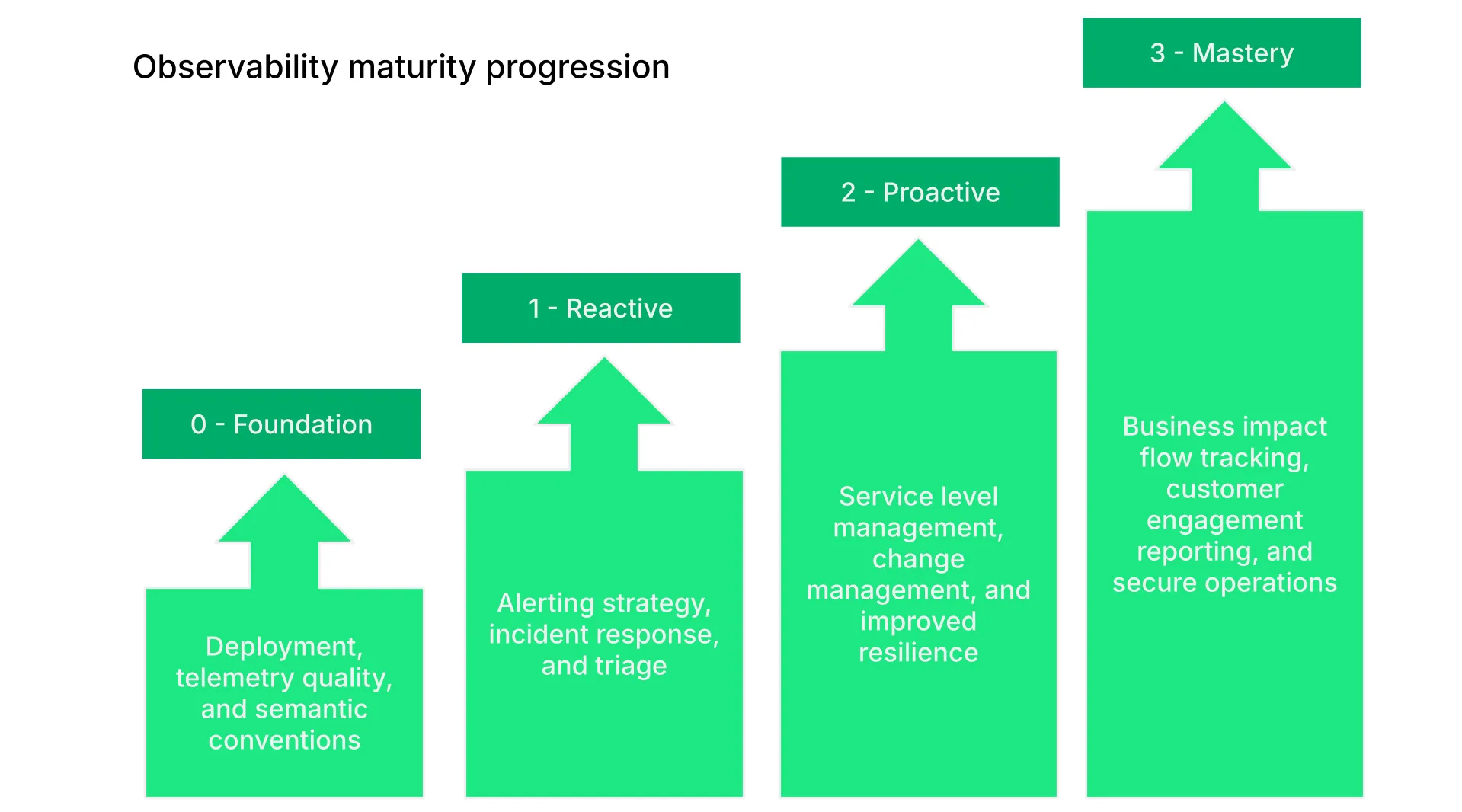At New Relic we are fond of saying that Observability maturity isn't a destination, it's a journey. It's a complex journey to be sure, and you should expect advances and setbacks along the way. To help with this journey we've prepared a model that tries to guide you to the best practices and habits that we believe make for an effective and valuable observability program.

The observability maturity progression demonstrated in the diagram on the above categorizes observability program elements into 4 levels. These 4 levels are an intentional over simplification of what it takes to operate an effective observability program. While the levels lend themselves to an orderly progression the reality is that most observability programs exist at all stages of maturity at all times.
What the maturity progression does not capture is purpose. Your observability program purpose should be the primary motivation for, and organizational focus of program investment. You should seek to define measurements that demonstrate your program is achieving its intended purpose.
To that end, we've done our best to provide a categorization of purposes as well. We've found that observability programs tend to gravitate around 3 core purposes:
Business uptime: Core service delivery, ensuring software systems satisfy their business imperative.
Engineering excellence: The processes in the development, deployment, and maintenance of software systems..
Digital experience: Ensuring software system end users are efficient and enjoy their software experience.
Each value purpose walks you through a progression from reactive -> proactive -> mastery observability practices. In addition to the these value driver aligned maturity progressions we've added a foundational maturity level:
- Intelligent Observability: Ensuring your New Relic agent deployment and standards are sufficent to allow you to achieve your observability purpose.
Taken all together then, there is a maturity progression underlying each of these purposes. To help support our customers with their observability program objectives we've merged the Maturity and Value concepts and provided Scorecards templates for each. Check the links above for an overview of each purpose, and the rules encoded in each scoreboard that will help you along your maturity journey.